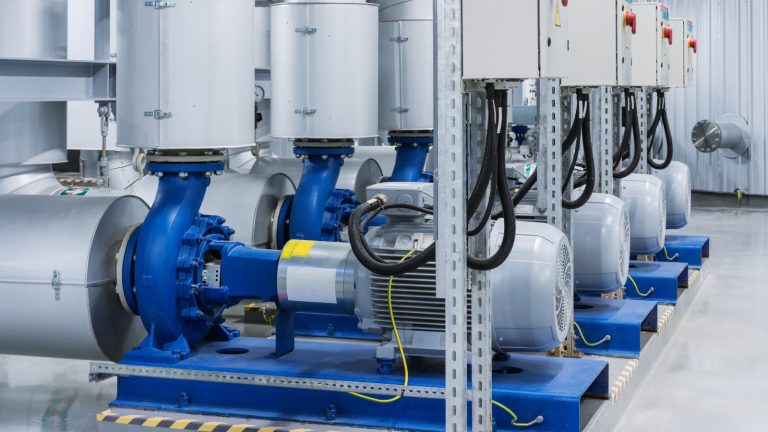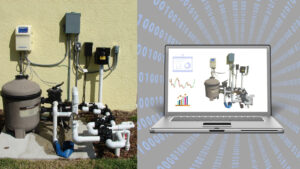Industrial pumps take centre stage as the most essential components in a broad range of sectors, and this varies from industries like water treatment, food manufacturing, to oil and gas and complex industries like chemical processing. They are supporting elements designed with the primary goal of transporting fluids such as gases, liquids, and slurries from one location to another smoothly and consistently.
This is why the industrial world places so much emphasis on selecting the correct pump. Proper pump selection has implications for cost balance, increased operating efficiency, and increased safety. However, the challenging part is, with so many designs surfacing, how can engineers select the ideal type for their purposes?
This article will act as a guide that helps you to understand the most popular types of industrial pumps, exploring their applications across several sectors.
Why Industrial Pump Type Matters

- The pump you pick has a considerable influence on your system’s efficiency, maintenance, and longevity.
- If we analyse this deeply, we can see that pumps are generally divided into two types: dynamic (rotodynamic) pumps and positive displacement pumps. Dynamic pumps are best suited for high-flow, low-viscosity applications, whereas positive displacement pumps excel in handling viscous or difficult fluids.
- What would happen if the engineers went with the incorrect one? Unfortunately, picking the wrong pump type might result in severe consequences such as frequent failures, greater energy expenditures, and worse process dependability.
- This is why you need to understand the most common pumps, as that knowledge allows you to match the appropriate technology to your requirements.
The Most Common Types of Industrial Pumps

Dynamic (Rotodynamic) Pumps
Centrifugal Pumps
Centrifugal pumps are known as one of the most popular and commonly used industrial pumps among other types. Only one simple principle lays the basis for this to operate: the impeller generates velocity in the fluid, which is afterwards distilled into pressure. This design or the architecture is what allows them to handle low-viscosity liquids at elevated flow rates.
Let’s see why they are popular:
- They come with a simple design and also fewer number of moving parts.
- These have the capacity to handle high flow rates efficiently.
- Compared to others, they show relatively low maintenance costs.
Popular Applications:
- Water treatment and distribution.
- HVAC systems.
- Chemical processing and irrigation.
Variants to know:
- Single-stage vs multi-stage: Single-stage pumps is powered to handle low head requirements, while multi-stage pumps are ideal to serve in high-pressure applications.
- Horizontal vs vertical: Horizontal pumps have become common in industrial operations; similarly, industrialists tend to use vertical pumps in tanks or sumps.
- Volute and diffuser designs: These adjustments can optimise efficiency based on a certain application.
Limitations: According to the experts, it is not suitable to use centrifugal pumps for very viscous systems, liquids or slurries, where it needs precise flow control at varying pressures.
Submersible and Other Dynamic Variants
Submersible pumps are in the industrial picture with the purpose of functioning entirely submerged in the fluid they are pumping. This feature is what brings the spotlight to them, and they are quite useful for stormwater handling, sewage treatment, and dynamic dewatering applications.
Other broad spectrum of variations, such as booster pumps, axial-flow pumps, and fire pumps, are employed in certain industrial contexts. Despite being somewhat less prevalent than centrifugal pumps, they keep being popular in specialised applications that require their specific qualities.
Positive Displacement Pumps
When it comes to the positive displacement pumps, we can see that they operate a bit differently from dynamic pumps. The uniqueness lies in their ability to trap a certain amount of fluid and drive it through the discharge. This quality is excellent for circumstances where the high-viscosity or abrasive fluids are of concern.
Screw, Gear and Lobe, Pumps
Rotary positive displacement pumps, which include various lobe, gear, and screw pumps, have strong appeal in sectors that require accurate, steady flow.
Why they are popular:
- They have the capacity to control high-viscosity fluids effectively.
- It is possible to deliver a consistent flow with this type of pump regardless of system pressure.
- Known to be suitable for metering and dosing applications.
Applications:
- The oil and gas industry employs gear and screw pumps mostly.
- Food and beverage processing always leans on lobe pumps for sanitary handling.
- Chemical processing requires these pumps to be resistant to corrosive liquids.
However, they come with specific limitations as well. For example, their higher initial cost is a challenge, and they have more intensive maintenance requirements compared to dynamic pumps. Also, it is a problem that they are not designed for high-flow applications.
Diaphragm, Peristaltic, and Progressive Cavity Pumps
According to engineers, these pumps are particularly effective if you have to handle fluids that are corrosive, abrasive, or shear-sensitive.
Diaphragm pumps
The special feature of them is that these pumps use a flexible membrane to transport fluids. Plus, they are proven to be good for corrosive chemicals and slurry.
Peristaltic pumps
These transport fluid by compressing a hose or tube. The uniqueness of them is that they prevent the pump mechanism from making contact with the medium.
Progressive cavity pumps
They use a helical rotor and stator cavity in order to transfer very viscous or slurry fluids smoothly and continuously.
Applications:
- Chemical dosing and handling.
- Sludge and wastewater treatment.
- Food pastes and viscous liquids.
- These sorts of pumps are very common in specialised industrial applications where liquid characteristics can pose harm to conventional pump types.
How to Choose the Right Pump Type

- The success rate of the pump mechanism depends on the fact that you go with the correct industrial pump. Selecting the ideal one is not easy, as it requires careful consideration of several other factors:
- You need to take fluid characteristics into account. This signifies aspects such as temperature, viscosity, chemical compatibility and abrasiveness.
- Many ignore flow and pressure requirements. This means the volume of fluid and the head or pressure needed.
- Check whether they transport solid content. This indicates the presence of particles that can damage some pumps.
- Cost and maintenance are what many of you inspect in the beginning. However, it must include the total cost of ownership, including energy utilisation and service breaks.
Trends and Why Popular Industrial Pump Types May Evolve

As much as the rest of the industrial world evolves, the market for industrial pumps keeps evolving unstoppably. When opting for a pump, many industries focus on modern goals such as decreasing the need for maintenance, energy efficiency and the capacity to offer smart monitoring via IoT and sensors.
This is why the new designs for diaphragm and electric diaphragm pumps specifically focus on benefits such as less environmental impact and increased flexibility and efficiency. With AI rising in the corner, these popular industrial pumps may shift from a traditional framework to a total digital transformation within the next few years.
Ensuring Industrial Pump Health via Artificial Intelligence

No matter which sector we talk about, each of them requires industrial pumps when transporting fluids in a wide range of practical applications. Every pump has a unique responsibility. This is why understanding the strengths, limits, and uses of each kind will help you select the best pump for your specific industrial needs. However, selecting the right one cannot fully serve your purpose, as its longevity and maintenance matter as well. What if industries could ensure Industrial pump health via Artificial Intelligence? Tigernix Smart Pump Asset Solution integrates a large number of Industry 4.0 capabilities, such as AI, IoT, Digital Twin, GIS, and Predictive Analytics, to guarantee your industrial pump network works as you expect.
Don’t wait any longer, take the first step forward and connect with Tigernix experts to receive a free demo today.







